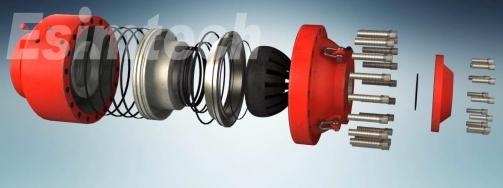In the complex and demanding world of subsea engineering, maintaining pipeline integrity is critical to ensuring safe and efficient operations. Subsea pipelines, often located in harsh and inaccessible environments, are subject to various threats such as corrosion, mechanical damage, and environmental stresses. Assessing and monitoring their integrity is a challenging task, but advancements in technology have revolutionized the way these assessments are conducted and communicated. One such innovation is the use of 3D animation, which has become an invaluable tool in visualizing subsea pipeline integrity assessments.
Enhancing Understanding Through Visualization
Subsea pipeline integrity assessments involve analyzing vast amounts of data, including inspection results, environmental conditions, and structural health metrics. Traditionally, this data has been presented in technical reports, 2D diagrams, or spreadsheets, which can be difficult for stakeholders to interpret, especially those without a technical background. 3D animation bridges this gap by transforming complex data into intuitive, visually engaging representations. By creating realistic models of pipelines and their surroundings, 3D animations allow engineers, operators, and decision-makers to visualize the condition of the pipeline, identify potential issues, and understand the implications of findings.
Simulating Real-World Scenarios
One of the most powerful applications of 3D animation is its ability to simulate real-world scenarios. For example, animations can depict the effects of corrosion over time, the impact of external forces like underwater currents or seismic activity, or the consequences of potential failures. These simulations provide a dynamic way to explore "what-if" scenarios, helping stakeholders anticipate risks and plan mitigation strategies. By visualizing these scenarios, teams can make more informed decisions about maintenance, repairs, or replacements, ultimately reducing the likelihood of costly or catastrophic failures.
Improving Communication and Collaboration
Effective communication is essential in subsea pipeline projects, where multiple stakeholders—including engineers, regulators, and investors—must align on decisions. 3D animations serve as a universal language, simplifying complex concepts and making them accessible to all parties. Whether used in presentations, training sessions, or stakeholder meetings, animations ensure that everyone has a clear understanding of the pipeline's condition and the steps needed to address any issues. This fosters collaboration and ensures that decisions are based on a shared understanding of the data.
Supporting Remote Inspections and Monitoring
With the rise of remote inspection technologies such as remotely operated vehicles (ROVs) and autonomous underwater vehicles (AUVs), 3D animation plays a crucial role in interpreting and presenting the data they collect. By integrating inspection data into 3D models, engineers can create detailed visualizations of the pipeline's condition without needing to be physically present. This is particularly valuable for pipelines in deepwater or remote locations, where access is limited.
Conclusion
The use of 3D animation in subsea pipeline integrity assessments is transforming the way engineers and stakeholders approach pipeline maintenance and safety. By enhancing understanding, simulating real-world scenarios, improving communication, and supporting remote inspections, 3D animation is proving to be an indispensable tool in the subsea industry. As technology continues to evolve, its role in ensuring the integrity and longevity of subsea pipelines will only grow, helping to safeguard critical infrastructure and protect the environment.

